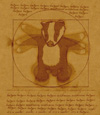App-V 4.6 sequencer question
Hello everyone,
I'm new to application virtualization and I'm wondering if it's mandatory to create a Q:\ drive on the PC that will sequence to install the software in a 8.3 format folder. On TechNet, they said that it's recommended to install the software that you want to sequence in the same drive that will be used on the App-V Client.
But during my test, I sequence Adobe Reader 9.4.1 and MS Visio Viewer 2007 and on my sequencer PC. I did the installation in the C:\ drive in a 8.3 format folder. I deployed the App-V package through SCCM on a PC where the App-V drive is Q:\ and it works like a charm.
So my question is, do you think we may have some issue in the future by not using the same drive on my sequencer and my client ???
Thanks
I'm new to application virtualization and I'm wondering if it's mandatory to create a Q:\ drive on the PC that will sequence to install the software in a 8.3 format folder. On TechNet, they said that it's recommended to install the software that you want to sequence in the same drive that will be used on the App-V Client.
But during my test, I sequence Adobe Reader 9.4.1 and MS Visio Viewer 2007 and on my sequencer PC. I did the installation in the C:\ drive in a 8.3 format folder. I deployed the App-V package through SCCM on a PC where the App-V drive is Q:\ and it works like a charm.
So my question is, do you think we may have some issue in the future by not using the same drive on my sequencer and my client ???
Thanks
0 Comments
[ + ] Show comments
Answers (14)
Please log in to answer
Posted by:
bradfwd
13 years ago
[font="times new roman"]Although recommended by Microsoft, creating the Q:\ drive on the sequencer PC is not required. I don't use the Q:\ drive on my sequencer PC either, and everything seems to be fine as long as you sequence to a separate folder for each application. For example, C:\App-V\AdobeReader\ and C:\App-V\Visio2007\.
Posted by:
kkaminsk
13 years ago
Posted by:
kkaminsk
13 years ago
Posted by:
rock_star
13 years ago
Posted by:
kkaminsk
13 years ago
Posted by:
darkfang
13 years ago
About Sequencer 4.6 SP1, I read that the 8.3 naming convention will disappear. Well, not really but the sequencer itself will generate the 8.3 folder.
For your info, I just did 2 more packages by installing them in their default directory in Program Files folder while sequencing and working as intended on a test machine with the app-V client with Q:\ drive.
For your info, I just did 2 more packages by installing them in their default directory in Program Files folder while sequencing and working as intended on a test machine with the app-V client with Q:\ drive.
Posted by:
pjgeutjens
13 years ago
Eric,
in itself, installing an application under C:\Program Files during sequencing will not 'break' an app-v package. However, the sequencer will put these files in a special subfolder in the resulting package, the so-called Virtual File System or VFS.
Files that get stored here generally take longer for the sequenced app to reach than files that are sequenced directly into the asset directory on the Q:-drive (or whatever driveletter), so the sequenced app will be slower to launch and less responsive.
Rgds,
PJ
in itself, installing an application under C:\Program Files during sequencing will not 'break' an app-v package. However, the sequencer will put these files in a special subfolder in the resulting package, the so-called Virtual File System or VFS.
Files that get stored here generally take longer for the sequenced app to reach than files that are sequenced directly into the asset directory on the Q:-drive (or whatever driveletter), so the sequenced app will be slower to launch and less responsive.
Rgds,
PJ
Posted by:
darkfang
13 years ago
Thanks PJ, that was I read on some other blog/forum. But if we are talking an App-V package under 200 mb, it should not be a problem (maybe 1-3 more second to load the app-v package)
Other question.
Is it possible to explore the Q:\ drive on a client ? (for troubleshooting)
In a scenario where we switch an application from "physical" to "virtual, is it possible to get an .ini value (or any other data) from "physical" file and set it inside the Virtual bubble ?
***********
*********** edit 4:15pm *********
I did some test between files store in the asset folder VS VFS and I didn't like what I saw.. Anything saved under the Asset Folder is "write protected". So everytime you load the App-V bubble, all files are restored.
Ex. : I have an application that have an .ini file and once the user enter his username/password, it write the value in the .ini.
I did the test with the recommended method (sequence in Q Drive). When I close the software and I restart it, the username/password was blank.
I did a second app-v package by installing the software in a different folder (not in the asset directory) and this time, my value are kept (c:\doc&set\$USER%\Application Data\Softgrid Data\%AssetFolder%-%PackageGUID%).
Fun fun fun....
Other question.
Is it possible to explore the Q:\ drive on a client ? (for troubleshooting)
In a scenario where we switch an application from "physical" to "virtual, is it possible to get an .ini value (or any other data) from "physical" file and set it inside the Virtual bubble ?
***********
*********** edit 4:15pm *********
I did some test between files store in the asset folder VS VFS and I didn't like what I saw.. Anything saved under the Asset Folder is "write protected". So everytime you load the App-V bubble, all files are restored.
Ex. : I have an application that have an .ini file and once the user enter his username/password, it write the value in the .ini.
I did the test with the recommended method (sequence in Q Drive). When I close the software and I restart it, the username/password was blank.
I did a second app-v package by installing the software in a different folder (not in the asset directory) and this time, my value are kept (c:\doc&set\$USER%\Application Data\Softgrid Data\%AssetFolder%-%PackageGUID%).
Fun fun fun....
Posted by:
kkaminsk
13 years ago
Unfortunately Windows Explorer does not work with newer operating systems as an App-V application but you can use something such as cmd.exe or if you want something graphical I've used an explorer type application called a43 (http://www.alterion.us/a43/).
Usually if we need to copy data into the virtual environment we use pre-launch scripts that will use reg.exe or batch file to copy in the .ini file. Here is a blog entry to give you an idea.
http://blogs.technet.com/b/appv/archive/2007/10/11/scripting-within-an-osd-file.aspx
As for your write protected issue. The first thing to look at are the NTFS permissions of the files but inside the sequencer do you know what the file attributes are in the files tab for the problem .ini file?
Usually if we need to copy data into the virtual environment we use pre-launch scripts that will use reg.exe or batch file to copy in the .ini file. Here is a blog entry to give you an idea.
http://blogs.technet.com/b/appv/archive/2007/10/11/scripting-within-an-osd-file.aspx
As for your write protected issue. The first thing to look at are the NTFS permissions of the files but inside the sequencer do you know what the file attributes are in the files tab for the problem .ini file?
Posted by:
darkfang
13 years ago
ORIGINAL: kkaminsk
As for your write protected issue. The first thing to look at are the NTFS permissions of the files but inside the sequencer do you know what the file attributes are in the files tab for the problem .ini file?
There's no information about the file attribute in the Files tab within the Sequencer but I did the same installation for my 2 scenarios. I didn't modified the NTFS permission either.
Posted by:
kkaminsk
13 years ago
Posted by:
kkaminsk
13 years ago
I opened up my sequence with Application Virtualization explorer and noticed that the .ini file is set to an attribute that you don't see in the sequencer post 4.5 I believe.

If the data is marked at user configuration which is written out to C:\Users\administrator\AppData\Roaming\SoftGrid Client\BM.001-E1FAF222-54C-4F84\UsrVol_sftfs_v1.pkg. When I delete this file my .ini file returns to its original state.
This is the way it should behave so that the user can modify the files and get their own modified copy. Now the question of why Microsoft removed two of the options in the sequencer is a bit of a mystery because I thought the User Data attribute set the file to be written in the above location but I guess it is the opposite. User config is data that can be tied to a specific user process and is stored per-user where user data is a user mode process modification but cannot be tied to a specific user so those modifications should be written out to C:\ProgramData\Microsoft\Application Virtualization Client\SoftGrid Client\AppFS Storage\BM.001-E1FAF222-54C-4F84\GlblVol_sftfs_v1_S-1-5-21-2021691987-3493714857-725184546-500.pkg.
If you open your sequence with Application Virtualization Explorer (http://www.gridmetric.com/products/ave.html) what do you see?

If the data is marked at user configuration which is written out to C:\Users\administrator\AppData\Roaming\SoftGrid Client\BM.001-E1FAF222-54C-4F84\UsrVol_sftfs_v1.pkg. When I delete this file my .ini file returns to its original state.
This is the way it should behave so that the user can modify the files and get their own modified copy. Now the question of why Microsoft removed two of the options in the sequencer is a bit of a mystery because I thought the User Data attribute set the file to be written in the above location but I guess it is the opposite. User config is data that can be tied to a specific user process and is stored per-user where user data is a user mode process modification but cannot be tied to a specific user so those modifications should be written out to C:\ProgramData\Microsoft\Application Virtualization Client\SoftGrid Client\AppFS Storage\BM.001-E1FAF222-54C-4F84\GlblVol_sftfs_v1_S-1-5-21-2021691987-3493714857-725184546-500.pkg.
If you open your sequence with Application Virtualization Explorer (http://www.gridmetric.com/products/ave.html) what do you see?
Posted by:
darkfang
13 years ago
Posted by:
kkaminsk
13 years ago
I would still suggest looking at the file attributes for the S3scr.ini file in the root of the Q:\ drive to make sure they are set properly using Application Virtualization Explorer. As for my lab if I create a .ini file in the root of my sequences asset folder it is defined as user configuration and is treated properly.
 Rating comments in this legacy AppDeploy message board thread won't reorder them,
Rating comments in this legacy AppDeploy message board thread won't reorder them,so that the conversation will remain readable.










